You can prevent freezing temperatures from killing your plants and trees this winter. Mulch can help you keep your tree and plant roots from freezing and help them explode in spring growth.
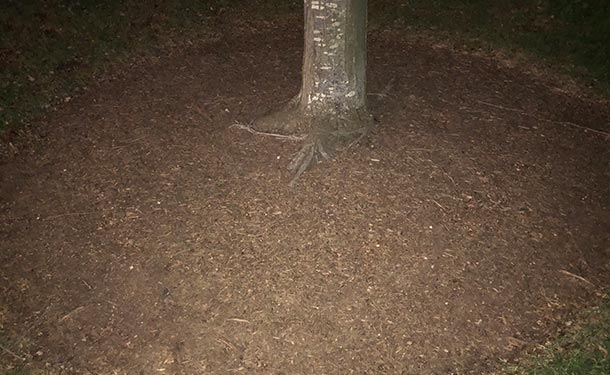
thetreecareguide.com gathered information about what winter mulching is, why it is necessary, and how you do it.
What is Winter Mulching?
Mulching is a long-standing gardening and landscaping practice used to regulate soil moisture and temperature.
• In spring and summer, mulch is applied to the ground to retain moisture, control weeds, and prevent erosion.
• In fall and winter, mulch is used primarily to regulate soil temperature.
Winter mulching prevents winter root injury by slowing down the daytime thawing and night-time freezing process in late fall and early winter. As mulch traps soil moisture and warmth, tree and plant roots can continue their growth farther into the winter months.
In regions with sustained below-freezing temperatures, the soil will freeze eventually. In early spring, mulch is of little help to stop desiccation (drying) of evergreen foliage. However, mulch allows your evergreens to go into winter better hydrated, dramatically reducing the damage from drying out when spring arrives.
In the Garden – Winter mulch should be used to protect your perennials from winter weather. This is suggested to safeguard perennial plantings and flower beds from alternating freezing and thawing cycles through winter, not from freezing.
The goal is to maintain your plants in a state of dormancy, rather than maintain them warm. Plants may break bud if kept too warm, and any subsequent growth will die during winter.
Winter Mulching Your Trees
When we mulch, we are replicating an eons-old process occurring naturally beneath trees in forests and wooded areas. Falling leaves and dying plants form a blanket over the forest floor protecting the soil from temperature variations and the trees from desiccation.
Use these tips when mulching your trees:
Apply Organic Mulch – Compost (well-decomposed), disease-free leaves, tree bark, pine needles, and plant by-products can all be used as organic mulch.
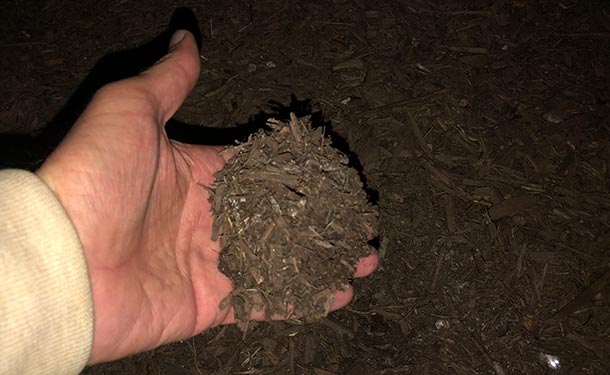
Do Not Volcano Mulch – When mulch is piled against and around the base of a tree resembling a “volcano,” you risk insect infestation, disease, the decline of the tree, and its eventual death.
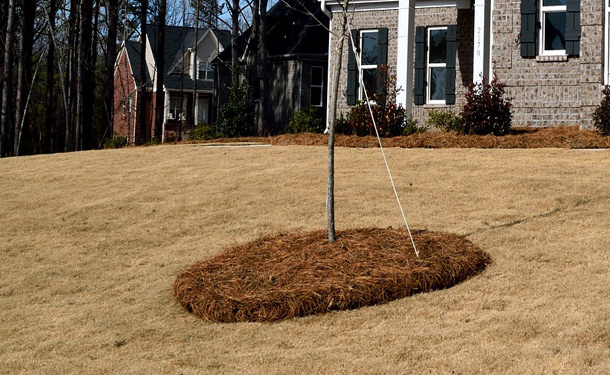
Learn more about the adverse effects of volcano mulching by reading thetreecareguide.com/volcano-mulching-can-kill-your-tree/
Mulch to The Drip Line – Begin laying mulch around the base of your tree (three to four inches from the root flare) and continue outward to the drip line (the outer extremity of the crown).
What you should end up with is a three to four-inch layer of organic mulch shaped like a donut around the tree.
Refresh Old Mulch – Over time, mulch can settle or become matted and compacted. Use a rake to break up the existing mulch and mix in fresh organic mulch to return it to its proper thickness.
Read more about mulching trees at thetreecareguide.com/3-crucial-mulching-tips-for-healthy-trees/
Winter Mulching Your Garden
Like mulching your trees, winter mulching your garden protects your plants from winter root injury and plant death. It does this by slowing down the thawing and freezing process in late fall and early spring.
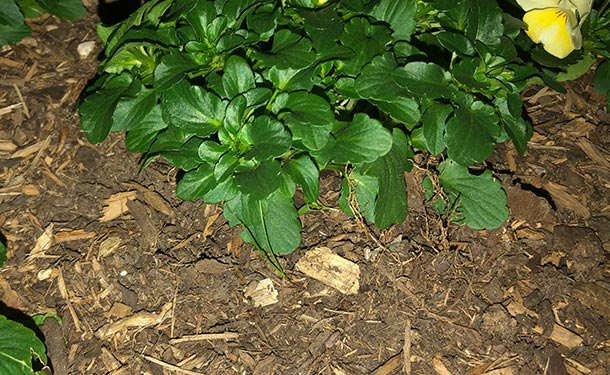
Follow these tips when mulching your garden:
Use Organic Mulch – Compost (well-decomposed), disease-free leaves, and plant by-products can all be used as an organic mulch in the garden.
Prevent Evergreen Desiccation – Evergreen Desiccation occurs in late winter and early spring when temperatures begin to rise, but the plant roots are not yet extracting moisture from the soil.
You can significantly reduce or eliminate this occurrence by mulching your evergreens earlier in fall and increasing watering intervals to twice per week with one deep watering per week until winter.
Avoid Volcano Mulching – Once you lay your mulch in the garden bed, be sure to pull it back from plant stems and shoots. As with the base of tree trunks, plant stems (especially woody plants) must remain un-covered and dry to prevent disease, infestation, and death.
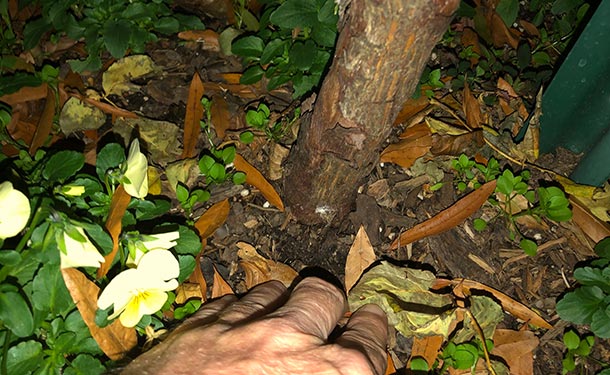
Remove the Mulch – In spring, when your plants resume their growth, remove the mulch from your garden bed. For woody plants and shrubs, the mulch can be left to provide weed control through spring and summer.
To learn more techniques for protecting your plants and trees in the winter, read thetreecareguide.com/winter-protection-evergreens-trees-plants/
Mulching Trees and Gardens
In this article, you discovered what winter mulching is, why your plants and trees need it, and how to do it without harming them.
By mulching your trees and plants for the winter, you are providing a layer of protection from the erratic freeze and thaw patterns associated with late fall and early spring.
By neglecting to winter mulch, you risk severe winter root injury, the decline, and possible death of your trees and garden.
Sources:
pss.uvm.edu/ppp/articles/mulchwin.html
web.extension.illinois.edu/hortihints/0110a.html
purdue.edu/hla/sites/yardandgarden/mulch-for-winter-protection/